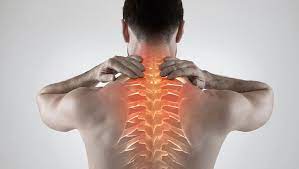Back pain is one of the most common health complaints worldwide. It can range from a dull ache to sharp, shooting pain and can affect people of all ages. Whether caused by poor posture, muscle strain, or underlying medical issues, back pain can disrupt sleep, work, and daily life.
Fortunately, many cases of back pain can be managed at home through targeted stretches, posture correction, and knowing when professional help is needed. In this article, we’ll explore practical ways to relieve back pain naturally and prevent it from recurring.
Common Causes of Back Pain
Understanding what causes your back pain is the first step toward effective treatment. Common reasons include:
- Poor posture from long hours sitting or standing
- Muscle strain from lifting heavy objects improperly
- Sedentary lifestyle causing weak core and back muscles
- Herniated or slipped discs
- Arthritis or age-related spinal degeneration
- Stress and emotional tension, which can tighten muscles
Pain can be localized in the upper, middle, or lower back, and each may have a different cause and solution.
Signs Your Back Pain May Be Serious
While most back pain resolves within a few days to weeks, certain symptoms may signal a more serious condition. Seek medical attention if you experience:
- Pain lasting more than 6 weeks
- Numbness or tingling in the legs or feet
- Difficulty walking, balancing, or standing
- Sudden weight loss with no explanation
- Pain after trauma (e.g., fall or accident)
- Loss of bladder or bowel control
Effective Stretches for Back Pain Relief
Gentle stretching helps relax tense muscles, improve flexibility, and support spinal alignment. These stretches can be done at home with no special equipment.
1. Child’s Pose
- Kneel on the floor
- Sit back on your heels and stretch arms forward
- Hold for 30 seconds, repeat 3–5 times
This pose gently stretches the lower back and relieves tension.
2. Cat-Cow Stretch
- Start on all fours
- Inhale and arch your back (cow pose)
- Exhale and round your spine (cat pose)
- Repeat slowly for 10 cycles
Promotes flexibility in the spine and reduces stiffness.
3. Knee-to-Chest Stretch
- Lie on your back
- Pull one knee toward your chest while keeping the other leg flat
- Hold for 20–30 seconds, switch sides
Eases lower back tension and improves circulation.
4. Piriformis Stretch
- Sit on a chair
- Cross one leg over the other
- Lean slightly forward until you feel a stretch in the buttock
- Hold for 20–30 seconds
Helps reduce sciatic nerve pain radiating from the lower back.
5. Cobra Stretch (for disc-related pain)
- Lie on your stomach
- Push your chest up using your hands while keeping hips on the floor
- Hold for 10–15 seconds
Relieves pressure on the spine and promotes healing of disc injuries.
Posture Tips to Prevent and Manage Back Pain
Bad posture is one of the leading causes of chronic back discomfort. Implementing proper body alignment can significantly reduce stress on your back.
At Work:
- Keep your computer screen at eye level
- Sit with feet flat on the floor and knees at a 90-degree angle
- Use a chair with lumbar support
- Take breaks every 30–60 minutes to stand or stretch
While Standing:
- Keep shoulders back and head aligned with the spine
- Avoid locking your knees
- Distribute weight evenly on both feet
While Sleeping:
- Sleep on your back with a pillow under your knees
- Side sleepers should use a pillow between the knees
- Avoid sleeping on your stomach, which strains the neck and back
Lifestyle Adjustments to Support Back Health
| Habit | Benefit |
|---|---|
| Daily stretching | Improves flexibility and reduces stiffness |
| Core strengthening | Supports spinal alignment and posture |
| Regular walking/swimming | Low-impact exercise for back muscles |
| Healthy weight | Reduces pressure on the spine |
| Avoiding heavy lifting | Prevents muscle strain and disc issues |
When to See a Doctor for Back Pain
While home remedies help in most cases, consult a medical professional if:
- Pain persists beyond a few weeks despite self-care
- Pain radiates down your leg (sciatica)
- You experience numbness, weakness, or tingling
- You have a history of osteoporosis or cancer
- Over-the-counter medication doesn’t relieve the pain
Your doctor may recommend imaging tests like X-rays or MRIs, physical therapy, or specialized treatments depending on the diagnosis.
Conclusion
Back pain can be frustrating and disabling, but with proper care, most cases can be managed without surgery or strong medication. Incorporating daily stretching, practicing good posture, and making lifestyle changes are simple yet powerful tools for relief and prevention. By understanding when to seek medical help, you can take control of your back health and maintain a pain-free life.
FAQs
1. How often should I do stretches for back pain relief?
Daily stretching for 10–15 minutes can greatly improve flexibility and reduce pain over time.
2. Can sitting too long cause back pain?
Yes, prolonged sitting weakens back and core muscles and increases pressure on the spine. Take frequent breaks to move around.
3. Is walking good for back pain?
Yes, walking is a low-impact exercise that strengthens back muscles, improves circulation, and supports healing.
4. Can stress make back pain worse?
Absolutely. Stress can lead to muscle tightness and inflammation, which may worsen or trigger back pain.
5. What is the best sleeping position for back pain?
Sleeping on your back with a pillow under your knees or on your side with a pillow between your knees provides the best spinal alignment.
